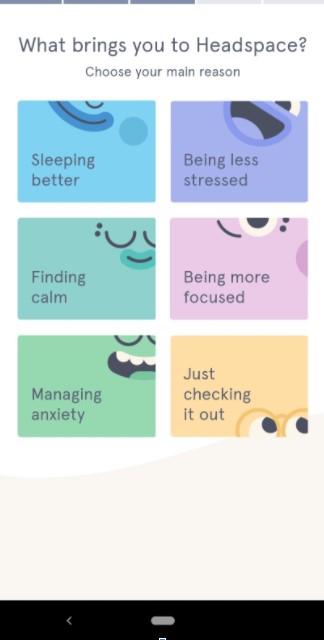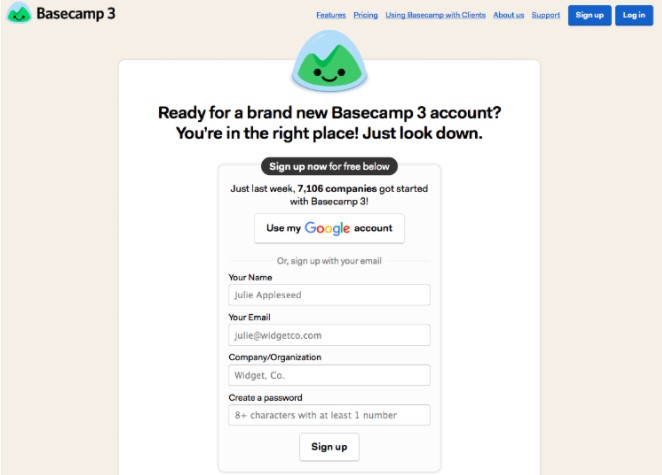“You never get a second chance to make a good first impression.” Will Rogers
This quote is relevant for many situations in life but is especially important when presenting products to new users and for retaining current customers. Making customers aware of the value of your offering is one of the most important, but also the most difficult, processes when launching a SaaS product. The good news is that today this first impression can (and should!) be planned, analyzed, and used for future growth.
What is user onboarding?
SaaS onboarding is the process that allows users to quickly get familiar with the benefits of your cloud service and helping them to understand your product’s functions, tools, interface, navigation, etc. Onboarding usually happens the first time prospects visit/register on the site and it helps the new user to overcome the most common difficulties.
Onboarding improves customer satisfaction and prevents customer churn because they don’t have to spend time on trial and error, reading guides, or talking to tech support. Instead, they can focus on the goal they set for themselves when they came to your site.
Tips for successful user onboarding
Planning user journey
A successful onboarding process requires a clear understanding of the audience. Before starting this process, define types of users according to their needs, goals, motivation, and the message to which they will respond.
- Is the price of the product the main factor for conversions?
- Do users need to know more about the product?
- At what point do they make a purchasing decision? Answering these questions will help you prioritize messages and organize user flows that best suit your customers’ needs.
For example, Headspace, a cloud platform for meditation asks customers about their goals (what they want to achieve with the help of this software). Depending on what the user will choose, they will see certain meditation exercises. That is Headspace has a different user flow for different types of users and as a result, they can satisfy the needs of different buyer personas.
Reducing friction
If your website has a clear value proposition but then it’s followed by a bad signup experience, the onboarding process can stop altogether. Friction is inevitable, but good design can help eliminate it and contribute to successful registration. Friction is anything that slows down (or stops completely) your prospects moving down the sales funnel. Conversion frictions can be caused by:
- Too long and complicated sign-up forms.
- Cognitive dissonance, meaning that marketing messages and actual product capabilities don’t match.
- The brand doesn’t evoke trust, etc.
Simplify where possible. Consider maintaining trust with user reviews and reviews. Let’s take a look at how Basecamp (online project management tool) reduces friction with their sign-up form.


The first thing to mention here is that Basecamp offers users to sign-up with their Google account. It makes the process very fast and easy. In case you want to fill out the info manually there’re only a few most essential fields, so it also won’t take long. Also, check things to consider before buying saas from here.
Guides, product tours, and tips
If the product is complex, you may need to demonstrate more than one feature at a time, which requires a more engaging onboarding process. Users should have an aha moment when they realize that your product is what they were looking for, and complex navigation or a jumble of functions can delay this key moment.
Consider using interactive prompts that educate and familiarize users with the basic functions of the product. Here is an example of Userpilot – a cloud app that helps optimize customer success.


Short tooltips with clear instructions and contrast CTA perfectly explain to new users how to use this service.
A person must use a product, not just register and forget. Registration alone has no value. Email onboarding is an efficient way to convert a new user to a paying customer. Working with email databases is especially important for SaaS companies to retain new customers. Here are a few things to keep in mind when organizing your onboarding process via email:
- The newsletter should support onboarding direction. Your email is the first step to conversion. The text should be clear.
- Include one clear call to action with a direct link: each email should be aimed at getting the user to do one specific thing.
Take a look at the onboarding email from FreshBooks, a cloud accounting and invoices platform:


Such an email gives clients a clear understanding of what they are supposed to do. It contains a noticeable CTA button and great step-by-step instruction. Seems like it would be very easy for a new user to add a client in FreshBooks.
Self-help opportunity
New customers will definitely have questions about your product. However, unless you provide 24/7 support, there’s no way to ensure that you are always there to help. In this case, the self-help opportunity will allow users to find the necessary solutions. A common tool here is the knowledge base or FAQ. A knowledge base is a section of your site where you can find answers to common customer problems.
Take a look at popular cloud project management software Asana and its FAQ section.


It covers all the necessary information users may know to effectively use the app.
Important metrics
Here is the list of the most essential metrics that you should monitor for optimizing SaaS onboarding:
- Churn rate
One of the most important metrics for your service is the number of people who stop using it for any reason. Keep track of how the churn rate changes with all the changes in the product and onboarding. Perhaps, with the help of onboarding, you can reduce the churn of customers who did not understand the logic of working in the service (the lower the churn, the more profit).
- LTV (Lifetime Value)
Lifetime Value is the profit that you receive from the client for the entire period of working with them. Note that this is a key marketing metric, as customer acquisition should never be more expensive than LTV. The performance of this metric is influenced by a million different factors, including the duration of the customer’s interaction with the service. High-quality onboarding can help extend the customer’s time with the service and have a beneficial effect on LTV.
- Customer retention rate
This metric will help you determine the reasons for customer churn. Track when your retention rates are lowest to improve them. For example, if you’ve lost most of your users during the first days after signing up, you might want to improve your welcome messages and motivate users to get started with the service faster.
Test everything
When the onboarding is ready, make sure it’s effective by testing it. Users should easily complete each step and the onboarding should meet their needs. The best way to do this is to run tests and analyze how customers are responding to your onboarding process. Testing provides helpful customer testimonials that highlight flaws in a product’s interface or user experience.
An effective onboarding process requires constant testing and improvement, but in the long run, your users will really enjoy using your SaaS product.




